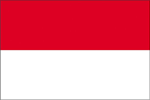
Monaco
Monaco /ˈmɒnəkoʊ/, officially the Principality of Monaco (French: Principauté de Monaco (French pronunciation: ə) mɔnaˈko]); Monégasque: Principatu de Múnegu; Italian: Principato di Monaco; Occitan: Principat de Mónegue), is a sovereign city-state, located on the French Riviera in Western Europe. It is bordered by France on three sides; one side borders the Mediterranean Sea. It has an area of 2.02 km2 (0.78 sq mi), and a population of 36,371, making Monaco the second smallest, and the most densely populated, country in the world. Monaco has a land border of only 4.4 km (2.7 mi), a coastline of 4.1 km (2.5 mi), and a width that varies between 1,700 and 349 m (5,600 and 1,145 ft). The highest point in the country is a narrow pathway named Chemin des Révoires on the slopes of Mont Agel, in the Les Révoires district, which is 161 metres (528 feet) above sea level. Monaco's most populous Quartier is Monte Carlo, and the most populous Ward is Larvotto/Bas Moulins. Monaco is known for its land reclamation, which has increased its size by an estimated 20%.
-
Geographical data
-
Demographics
-
Administrative divisions
-
Economy












Details of the diplomatic missions, government agencies, immigration services